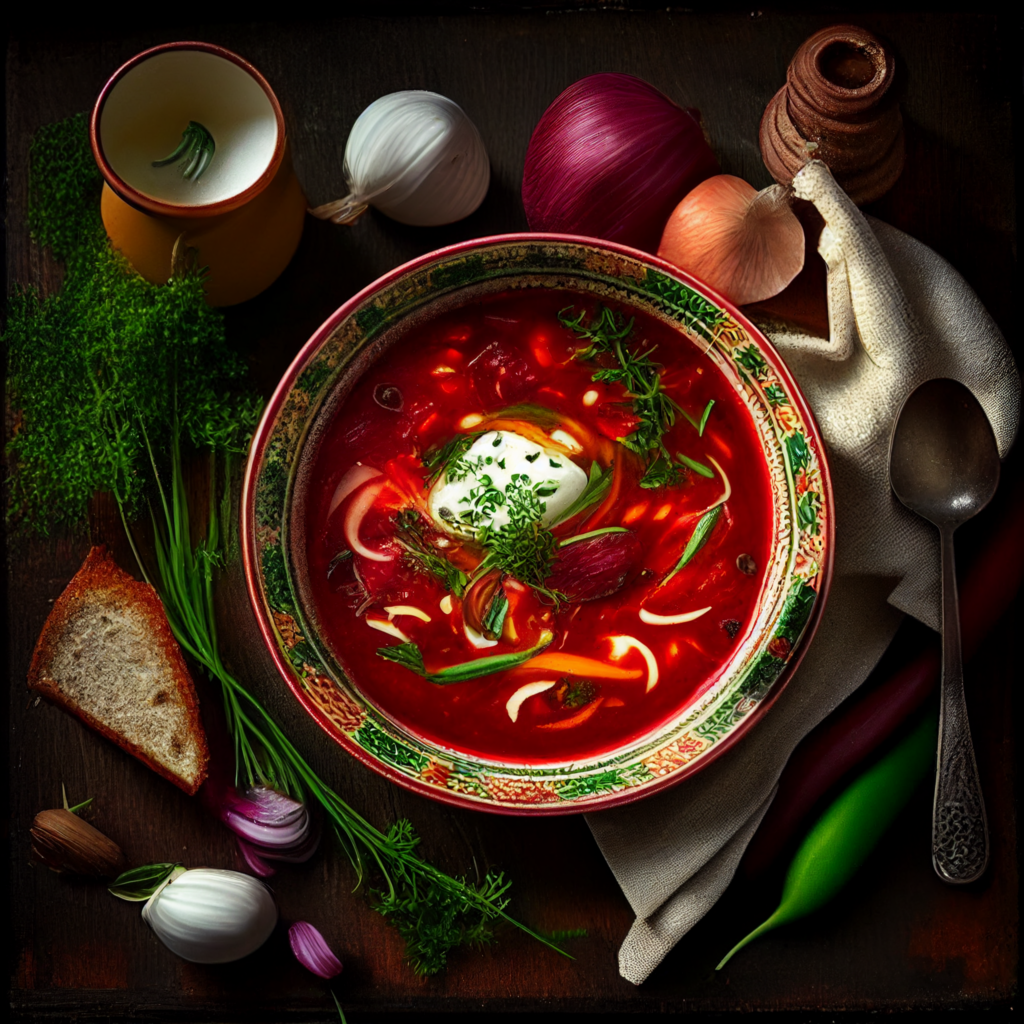
Borscht is one of the most well-known dishes in Russian cuisine that is also widely enjoyed in other countries, including Ukraine, Poland, Romania, the Czech Republic and beyond. This delicious and nutritious soup has a long history that stretches back over many centuries.
The history of borscht began in Byzantium in the 9th century when "shchi," a soup based on sauerkraut, was invented. Over time, other ingredients such as meat, onions, carrots, beets, and others were added to this soup. As a result, a more balanced and nutritious soup was created, which became the basis for borscht.
Borscht became a widely popular soup in Russia during the 18th century due to its taste and ease of preparation. Unlike the rich dishes of French cuisine, borscht could be made from readily available ingredients such as beets, cabbage, meat, and potatoes.
Over time, the recipe for borscht has been changing depending on the region. In Ukraine, borscht is made from red beets, while in Russia, it is made from white beets. In regions of Russia, such as Siberia, borscht is made using meat broth, while in southern regions, fermented dairy products such as kefir are used.
Today, borscht remains one of the most popular dishes in Russia and beyond. Depending on the region, borscht recipes may include different ingredients. Modern recipes may include additional ingredients such as beans, mushrooms, chicken, pork, or beef.
Although recipes may vary, all borscht recipes include basic ingredients such as beets, cabbage, carrots, potatoes, onions, meat, and spices. These ingredients create a unique taste and aroma for borscht.
To prepare borscht, different types of meat such as beef, pork, or chicken and meat broth are used. For vegetarians, meat can be replaced with mushrooms or legumes.
Most borscht recipes begin with sautéing onions, carrots, and beets in a pan. Then, chopped cabbage, potatoes, meat, or mushrooms, broth, and spices are added. The soup is simmered until it is cooked, and then grated beets, tomato paste, and vinegar are added, which give the soup its distinctive bright red color and light acidity.
In addition, borscht is often served with sour cream and herbs. Sour cream adds a creamy and smooth taste to the soup, while herbs add freshness and aroma.
Borscht is not only a delicious dish but also has many health benefits. Beets contain many vitamins and minerals, such as potassium, iron, folic acid, and vitamin C. Cabbage is also a rich source of vitamins and minerals, as well as fiber, which helps maintain intestinal health.
In conclusion, borscht is not just a dish, but also a symbol of culture, traditions, and unity, which connects people from around the world. Its long history and popularity attest to the fact that it remains an integral part of Russian cuisine and culture and is a beloved dish that can satisfy even the most discerning taste.